
16 minute read
NEW IMMIGR ANTS Helping newcomers find employment
HELPING NEWCOMERS FIND EMPLOYMENT
nd there is plenty of work – over 40,000 job openings in Montréal in 2018! In order to find employment, newcomers must spend the time and effort required and overcome certain challenges. But their situation is improving, even though the job market is tightening up and a shortage of labour is affecting many sectors across Québec. BETTER WORKFORCE INTEGRATION While there is usually a higher rate of unemployment among immigrants than among native-born Canadians, that discrepancy has been diminishing in recent years. According to a recent study by the Institut du Québec, the unemployment rate for immigrants aged 25 to 54 fell to 6%, whereas the Québec average was 5.6% (data for September 2018). The employment rate is also quite positive, having climbed almost six percentage points in 10 years, to reach close to 78% in 2017. Even immigrants who have been here less than five years have benefited from that surge. Their employment rate went from 58% in 2007 to approximately 66% in 2017. Ahmed Sahboun, director of Employment and Immigrant Services for Clé pour l’intégration au travail des immigrants (CITIM), has also taken note of that upturn. "Even though it is on a case by case basis, generally speaking immigrants are discovering that it is easier to find a job now than it was before, whether they are permanent or temporary residents," he said. Of the 1800 people who use CITIM’s services every year, he estimates that approximately 83% manage to find employment. Better yet, 40% find a job in their field of expertise or in the sector they were aiming for. CHALLENGES Mr. Sahboun stated that he was impressed by the high level of preparation among immigrants who make use of CITIM services, and also admired their perseverance and ability to develop job search strategies. "When they are supported by an organization like ours with our various resources and tools, they succeed rapidly," he said. A
AHMED SAHBOUN Director of Employment and Immigrant Services Clé pour l’intégration au travail des immigrants (CITIM) Every year the Greater Montréal region welcomes 86% of new immigrants to Québec. The city remains an attractive magnet for newcomers.
The CITIM provides resources and services for immi grants to help them integrate into the workforce, offering support and guidance, training, job search tools, networking events, etc. Nonetheless, foreign candidates face challenges, depending on their individual situations. These challenges range from learning a new language to obtaining official recognition of skills and diplomas.
GETTY IMAGES BY PEOPLEIMAGES

"In regulated and licensed professions – professions with reserved titles – the path to becoming a member of a professional order can be long and arduous. We assist them in making their way through the requisite procedures," added Ahmed Sahboun. Moreover, having professional experience in another country can help their successful integration into the workforce. The individual must be aware, however, of the differences in the Québec market and understand the expectations of local employers, as that will help facilitate the transfer of skills.
To simplify the workplace integration process, Mr. Sahboun recommends to future immigrants that they get as much information as possible before departure and prepare as much as possible beforehand, e.g. drafting résumés and employment queries, contacting professional orders, etc. "Once they arrive here, it’s important not to remain isolated and cut off, but on the contrary to seek out necessary resources; there are many available. Get information from people who have the requisite expertise, at aid agencies for example," he suggested.
Perseverance is a must and efforts are generally rewarded, as statistics indicate. The Institut du Québec study demonstrated that 84.3% of immigrants who arrived in Québec in 2010 were still here in 2015, a marked improvement given that the retention rate was only 75% in 2000.
With many older workers opting for early retire ment and an active population that is decreasing in size, the integration of immigrants into the workforce is more than ever a necessity if Québec is to continue to grow and develop. They represent a valuable asset indeed.

Reinvent the city.
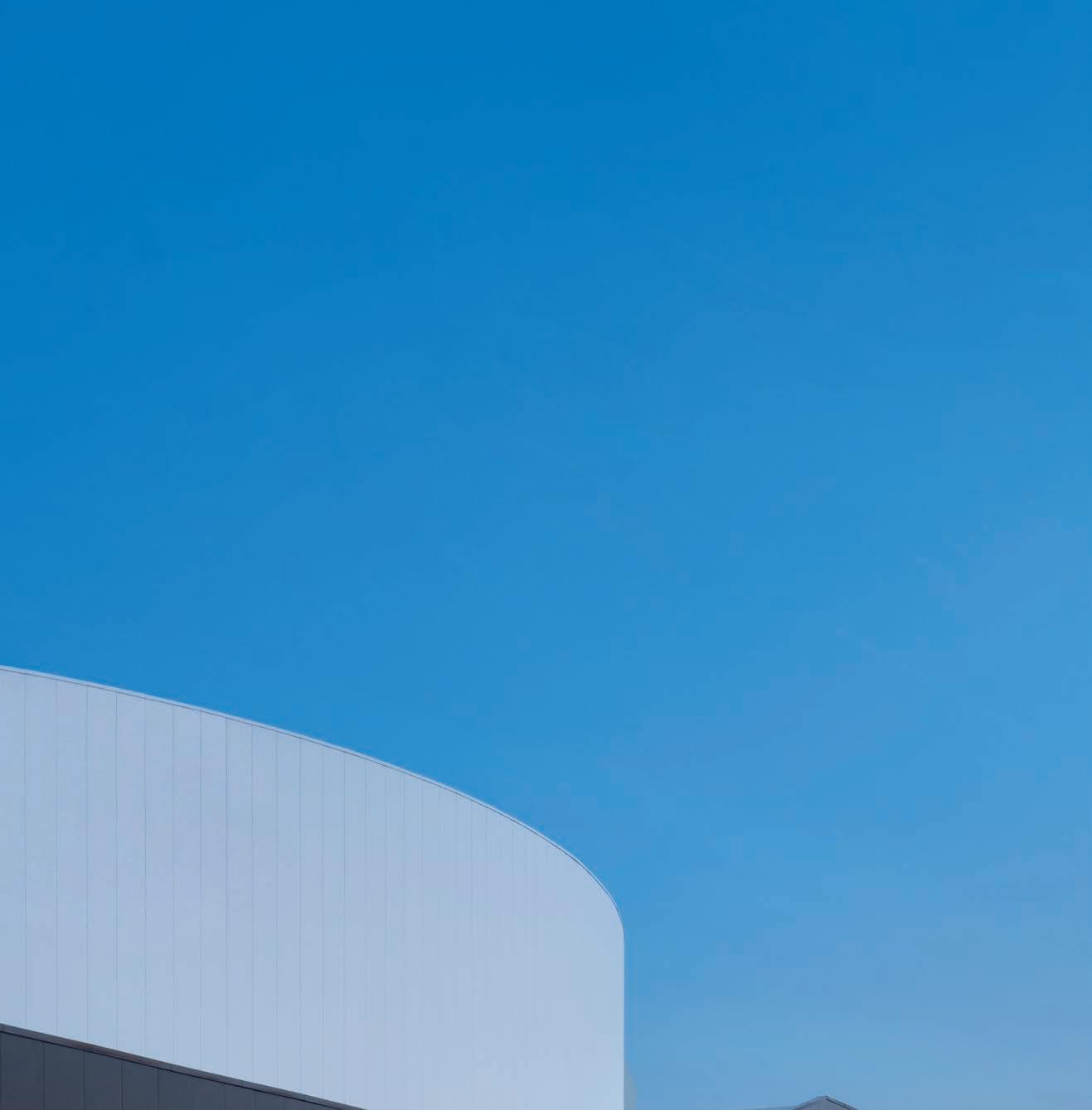

Take part in the development of the 3rd largest city in Quebec. Its thriving economy, 11,655 businesses, 158,945 jobs, a bustling downtown area, a population growth rate twice as fast as the rest of the province, an outstanding quality of life and its warm welcome to support the development of entrepreneurs and businesses all make it an ideal place.
Learn more about our services, incentives and tax credit program.
Laval
A GROWING CITY THAT ATTRACTS BUSINESS AND WORKERS
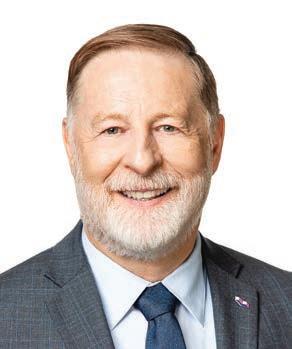
In a context of strong economic growth, the City of Laval has assigned a support team for all employment activities within its territory.
MARC DEMERS Mayor of Laval
he Laval economy is quite diversified," noted the city's mayor Marc Demers, mentioning the strong presence of several sectors: retail, including one of the largest shopping centres in Canada; Biotech City with many big pharmaceutical companies and research institutes employing over 5000 people; aerospace firms; the knowledge sector with the campuses of the University of Montréal and UQAM; an expanding institutional sector; a large hospital. In short, the 12,000 firms established in Laval offer many diverse employment opportunities not only for professionals but for workers of all sorts. T "
"Our economy is dynamic, with a performance well above the Québec average. According to a recent Desjardins Economic Studies report, that strong performance will continue again this year. We are also well situated on Montréal's northern
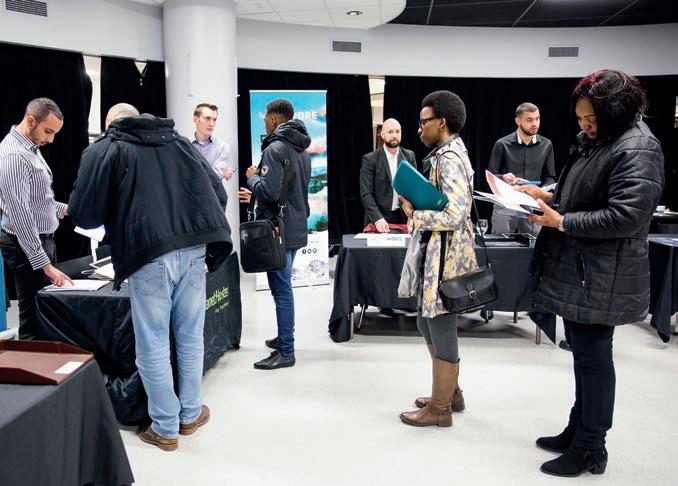
ring, where the movement of people and goods is easier than on the Island of Montréal. Our demographic growth curve is impressive. We foresee a 22.4% increase in our population from 2016 to 2041. That is higher than the 13% projected for the rest of the province, according to government forecasts," he said, adding that the Laval workforce is multicultural, bilingual and well educated, 52% of its citizens have a postsecondary diploma or degree.
RECRUITING AND RETAINING TALENT "The municipality has all the key partners required to support the productivity and growth of our economy. The services offered by the city include a seasoned team in our Economic Development Service that is entirely dedicated to skilled worker recruitment and international labour mobility," said Mr. Demers. He described an ecosystem focused on recruitment, promotion, international labour mobility, employability, worker integration, professional training, and college and university education.
The mayor recounted a joke that he usually tells to people attending opening ceremonies for businesses newly established in Laval. "I tell them that we are going to do everything possible to tie them down by providing to their employees a family-friendly place to live, whether in terms of the environment, culture or sports, features so attractive that their employees will never want to move. Consequently, the businesses are condemned to remain in Laval. That’s the strategy we're pursuing," he concluded. In fact, Marc Demers regularly visits companies, businesses and institutions so as to better understand their needs. n
Sainte-Julie

Free activities for the entire family
Numerous parks, green spaces and bicycle paths
4 industrial parks
Close to Montréal and Longueuil
A Great Place to Live and Work!
Sainte-Julie
A GREAT PLACE TO LIVE AND WORK!

With over 30,000 residents, the city of Sainte-Julie has a lot to offer. This South Shore municipality stands out for its dynamism and outstanding quality of life.
SUZANNE ROY Mayor of Sainte-Julie
lose to both Montréal and Longueuil and ideally located at the intersection of Highways 20 and 30, Sainte-Julie offers the benefits of a large urban centre, but with no inconvenient aspects. "We are not a place of transit, but an environment where people can grow up, live well and grow old – in other words, go through all the stages of life. We are also recognized as a Child Friendly Municipality and a Senior Friendly Municipality," noted Mayor Suzanne Roy. Its human dimension, activities and free outdoor shows and events delight young and old alike. C
The city emphasizes sustainable development supported by an ambitious environmental plan, and indeed Sainte-Julie has several nature parks and green spaces. It also received the highest rating awarded by the Fleurons du Québec corporation for the quality of its landscaping, parks and horticulture.
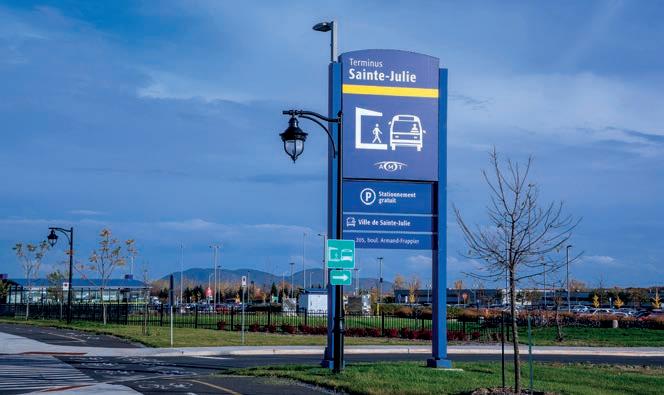
CITY OF SAINTE-JULIE EMPLOYMENT OPPORTUNITIES Its attractiveness is also based on economic development. "We have embarked on a transitoriented development (TOD) project at the city entrance, a multi-use district that will encourage people to use mass transit. It will be a place where residents can easily access services, transit and shops on foot. The first phase is nearing completion, and the second is being rolled out as we speak," said Suzanne Roy.
Besides a Park & Ride lot and a covered bike station, it will also feature local shops, services and mediumsized businesses, as well as rental apartments and assisted living units, thus creating an appealing mix of uses and clienteles. "Sainte-Julie also has seven public transit routes within its territory, in addition to three taxi-bus routes, which are free of charge," she added.
Four industrial parks are home to numerous firms in a wide variety of fields (high technology, research and development, manufacturing, etc.), which generates a good employment pool. "Sainte-Julie has set up an employment bulletin board that displays jobs posted by firms seeking employees. A great variety of jobs are available in diverse areas: engineers, accountants, clerks, labourers, etc. There's something for everyone!" Working together with the regional county municipality, Sainte-Julie has adopted an intervention strategy to help businesses recruit workers. The approach includes training, employability support and missions abroad to recruit the skilled workers the municipality needs to pursue its growth and development. n
REAL ESTATE + MOBILITY

BY ANDRÉE DE SERRES, PH. D., IVANHOE CAMBRIDGE REAL ESTATE CHAIR, SCHOOL OF MANAGEMENT, UNIVERSITY OF QUÉBEC AT MONTRÉAL (ESG UQAM)
Climate change, migration, densification and new forms of mobility are all phenomena that oblige us to urgently rethink and implement inclusive, sustainable development of the urban landscape, and to adopt an ecosystems approach that is closely intertwined with real estate projects and sustainable mobility.
ll major cities face important issues in their response to climatic, demographic, social, environmental and economic challenges. These include a growing population, urban sprawl or densification, developing and maintaining infrastructures and services, and implementing measures to adapt to, attenuate or reduce greenhouse gas emissions (GHGs). Generated to a great extent by industrial activities and the movement of people and goods, GHGs disturb not only the climate, but also adversely affect the physical and psychological health of citizens. Buildings are major traffic-generating centres, with people moving back and forth from home to work, or clients and users coming to shop or for leisure activities, health care, education, etc. Since building location and use shape the morphology of neighbourhoods as well as traffic patterns, it is important to reflect on the role of real estate actors in the co-construction of improved mobility and sustainable neighbourhoods. A
How do we evaluate the reciprocal impacts, positive and negative, of real estate and mobility projects? How can we better integrate mobility into real estate projects and achieve inclusive, sustainable development in our cities?
MANY HEADS ARE BETTER THAN ONE In an effort to find answers and to propose innovative solutions, the Ivanhoe Cambridge Real Estate Chair at ESG UQAM joined with Michelin’s Movin’On Summit to present on November 4, 2019 a Real Estate and Mobility symposium (Immobilier + Mobilité: pour un développement durable et inclusif des territoires en milieu urbain) at the Jacques Parizeau Building in Montréal, headquarters of Ivanhoe Cambridge, a subsidiary of the Caisse de dépôt et placement du Québec. Part of the 32 nd annual Entretiens Jacques Cartier event, which this year celebrated 40 years of friendship between the cities of Lyon and Montréal, the symposium brought
DENIS BERNIER

together members of the real estate sector, municipal authorities, mobility experts and providers of essential services. Discussion was aimed at rethinking traditional ways of doing things so as to come up with innovative means of redeveloping urban neighbourhoods to make them more agile, sustainable and inclusive. People from the business community, universities (students and professors), the general public and institutional and governmental representatives from Québec, France and across Canada shared ideas and discussed best practices to adopt for inclusive, sustainable development of the urban landscape. The goal was to raise awareness about issues associated with real estate development and the implementation of new mobility and infrastructure projects, and to explore new proposals for improving congestion and traffic in order to jointly pursue an ecosystems approach to mobility in major cities. The event actively encouraged the sharing of innovations, practices and new visions from both sides of the Atlantic.
The presentations, discussions and exchange of ideas during the event focused on the links and connections between real estate projects, urban renewal projects and mobility projects, and their social, environmental and economic consequences. Some 24 speakers and
many officials and representatives from the cities of Montréal, Lyon and Clermont-Ferrand, professionals and researchers from Québec and from France, along with a hundred participants, all discussed these important issues. They explored solutions to better integrate mobility in property development projects, shared their experiences and discussed practices for achieving inclusive, sustainable development in the urban milieu. The mayor of Montréal, Valérie Plante, closed the event by reminding participants of how important these issues are for creating human-scale cities where neighbourhoods are socially and generationally diverse, have strong economic and cultural components, and are centred on citizens’ well-being and quality of life .
Participants shared different ways of designing and structuring new projects (Quartier Eureka Confluence in Lyon and YUL Montréal, Trudeau International Airport), of pinpointing issues related to the implementation of mobility projects that involve urban infrastructures and buildings (TOD - Transit-Oriented Development, POD - Pedestrian-Oriented Development, the vertical city), and of binding together real estate, mobility and social inclusion projects. Presentations also made participants aware of investors’ positions as regards responsible investments.




The proposals put forth will contribute directly to research projects undertaken by teams associated with the Ivanhoe Cambridge Real Estate Chair and the Observatory of Innovations and Added Value in Real Estate at ESG UQAM, which are supported by Ivanhoe Cambridge, BOMA Québec, Fonds immobilier de solidarité FTQ and Aéroports de Montréal.
REAL ESTATE, MOBILITY AND THE CITY Real estate, mobility and the city are three intrinsically linked elements necessary for successful sustainable development and ecological transition. Buildings, whether designed for residential, commercial, administrative, educational or health care purposes, are the chief generators of the movement of citizens within a city. As destinations, buildings set the daily pace for traffic and mobility, and thus shape the form and flow of the urban landscape. As many speakers pointed out, the links between the shape of a city and the types of buildings favoured in the different neighbourhoods determine its transportation system. The transportation system will, in turn, influence the shape and development of the urban landscape. It will have an impact on the organization and maintenance of transport infrastructures that are responding to growing demand.
It is imperative that cities draft sustainable mobility strategies that reduce the distances travelled, and adopt regulatory measures for innovative use of urban land that take these factors into account. Buildings are often built and used for a life cycle of more than 100 years. In addition to determining their purpose and use, note that their location, potential occupancy and transformation are also decisive factors in a city’s quality of life. The chances of a sustainable mobility and ecological transition strategy succeeding in a big city are slim if it does not include real estate projects. A successful strategy will favour greater density and mixed-use buildings and a greater social, residential and commercial mix in the various city districts. For example, a new political and regulatory framework could reflect a rethinking of how urban territory is occupied by promoting tools to measure and evaluate building construction, renovation or transformation projects, thereby highlighting the positive environmental, social and economic impacts. It would place special emphasis on its effects on mobility and on reducing traffic and congestion, as well as greenhouse gas emissions.
THE IMPORTANCE OF SYNERGY The links between key real estate, mobility and municipal actors (public, private and academic sectors) must be reinforced in order to redefine the framework of intervention and to stimulate their innovative and creative potential for jointly building or rebuilding the inclusive, sustainable districts of tomorrow. It is becoming
DENIS BERNIER
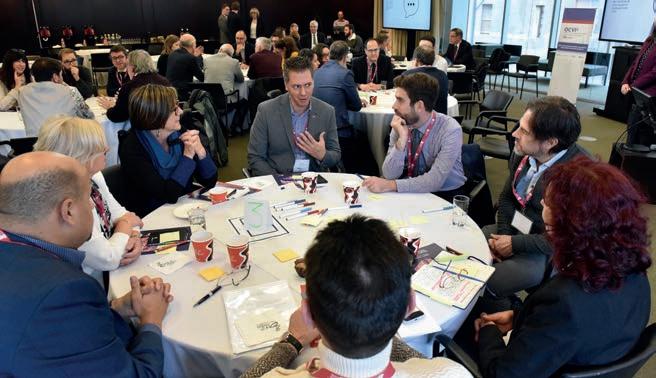
increasingly crucial to make key actors aware of the systemic impacts generated by their projects. A building can create a positive value for the neighbourhood by providing new services to the citizenry or by increasing the local population and justifying new mobility services. The value of the building depends to a great extent on the quality of life of the neighbourhood and access to smooth-flowing transit systems.
One can no longer imagine the development of cities or real estate projects without including management of the social, environmental and economic impacts, i.e. accessibility, inclusion and mobility. Management of these impacts exceeds the jurisdictional limits of cities. Indeed, pollution, noise and traffic flow, as well as the social and environmental consequences of decisions and actions taken by citizens and elected officials, do not stop at municipal borders. A more systematic mode of governance that takes into account the impacts generated by various projects is necessary in order to facilitate the development of the urban landscape and its ecological transition.
The impacts and interrelations between real estate, mobility and local neighbourhoods (including public infrastructures and services), force us to come to terms with the need to explore new approaches that improve mobility, and also to implement co-construction strategies for new projects. We must adopt more than a systemic approach; we must actively support an ecosystemic vision of the city.
Property owners and investors are facing new issues in terms of support for inclusive, sustainable real estate development, and must adapt their approach. The concept of a building’s purpose and use has evolved. Often destined for a single function in the past, a building is now viewed as a generator of needs and impacts, and as a provider of services not only for its users, but also for its neighbourhood. The value of a building depends not only on the value of its leases and on the quality of its occupants, but also on the quality of life of the surrounding district. The physical limits of a property are becoming increasingly vague, morphing into a bundle of rights and obligations and accompanied by ever-evolving new data that allow us to assess and measure impacts, which we then must learn to manage.






